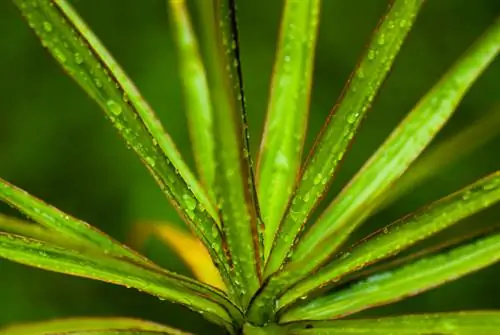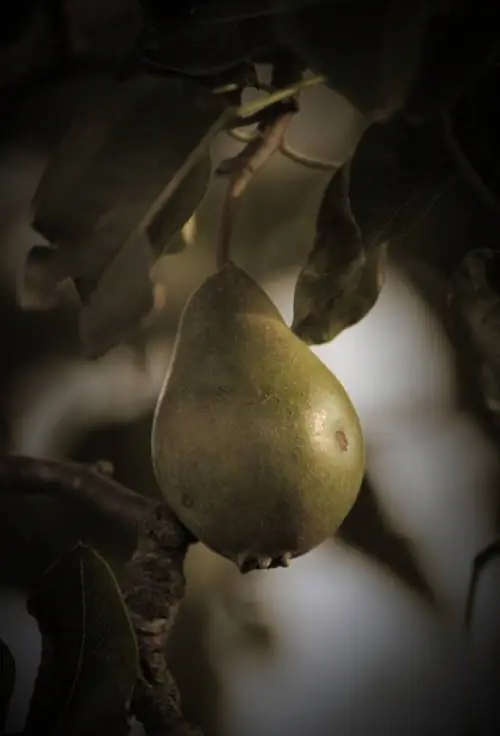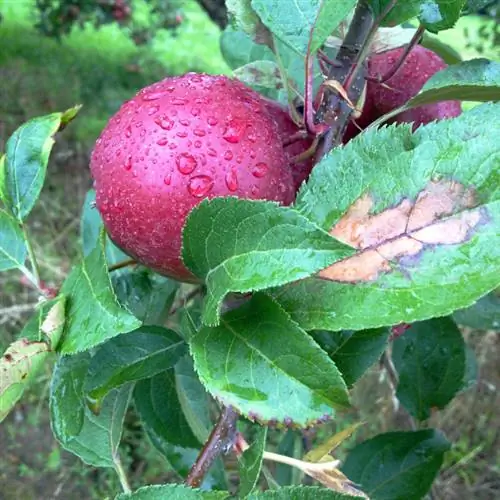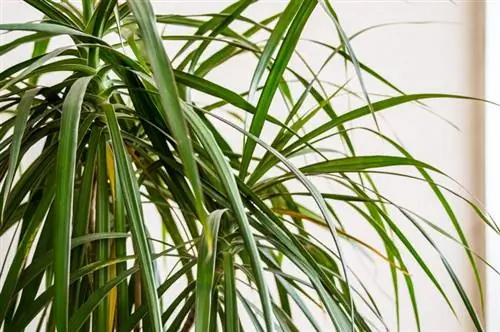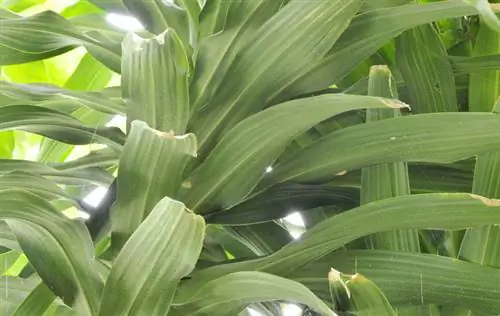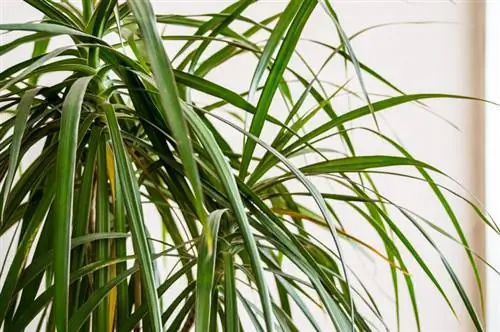- Author admin [email protected].
- Public 2023-12-16 16:46.
- Last modified 2025-01-23 11:21.
Basically, the dragon tree is a relatively easy to care for houseplant. If a dragon tree gets partially or completely brown leaves, then this does not necessarily have to be a sign of a particular disease.
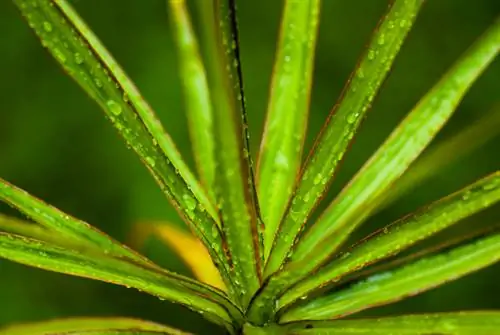
What to do if the leaves on the dragon tree are brown?
Brown leaves on the dragon tree can be caused by dry indoor air, incorrect watering or location problems. This can be remedied by spraying the leaves with low-lime water, adapting watering habits, using suitable fertilizer and a suitable location that is not directly in the sun or too close to the radiator.
Don't panic at the first dragon tree: growth form similar to palm trees
The “trunk” of a dragon tree is often unbranched and somewhat the same thickness from top to bottom. As with many palm trees, this trunk is created by slowly lengthening at the upper end, where old leaves regularly die off. Therefore, you should not panic if the lowest leaves turn brown on your first dragon tree. This is completely normal as long as new, fresh green or, depending on the subspecies, reddish leaves always grow above these brown leaves.
What to do with brown leaf tips
If the leaves turn brown primarily at the tips of the leaves, this can be an indication that the air in the room is too dry. Dragon trees not only like it evenly warm, but also need a certain level of humidity. However, it is difficult to keep this level consistently high in many interior rooms, as high humidity also carries a certain risk of mold on the walls. But you can do something good for your dragon trees if you put water with as little lime as possible (e.g. collected rainwater) in a spray bottle (€6.00 on Amazon) and use it to wet the leaves at least once a week.
Be careful when watering
If all the leaves of your dragon tree turn brown at the same time (or first yellow and then brown), this can be a sign of serious care errors. For example, dragon trees don't like it at all when they:
- are placed too close to the radiator
- stand in direct sun all day long (this can cause “sunburn” on the leaves)
- never be repotted
- do not be fertilized
- being kept too dry or too wet
The root ball of the dragon tree should never dry out as a rule, but waterlogging can be an even more serious care error.
Tip
If the brown leaves are accompanied by a root ball that is obviously affected by rot (which can usually also be smelled), it may be too late to save the plant. If the top of the dragon tree is not yet soft and rotten, you can sometimes try to cut the “trunk” cleanly and let it re-root like a cutting.

